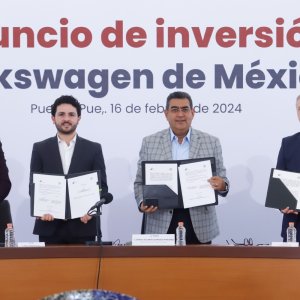Is Nearshoring in Mexico a Growing Trend for European Companies?

STORY INLINE POST
Mexico has always had a strategic position. It’s an industrialized economy with relatively cheap labor costs right next to the biggest economy in the world. Between 5 to 10 percent of the companies contacting us do so to get more information regarding a potential investment in Mexico. Most questions are linked to labor and logistics costs but also the availability of reliable providers.
I believe that a few new trends have accelerated the interest of European companies in establishing in Mexico. Some are linked to the pandemic and its consequences. Mexico has kept its borders opened and contingency rules were lighter. For some companies, it was easier to travel to Mexico than to some Asian countries or even within Europe. The US economy was also less impacted so there was a growing interest in the North American markets.
After the hard waves of COVID had passed, European exports were hard-hit by the cost of containers. Door to door, a container could cost four times the pre-pandemic price. Some companies started thinking about producing the less strategic parts of their products in Mexico. It would allow them better control of their supply chains and to respond quicker to growing or slowing demand.
The zero COVID policy in China has also scared off investors as production plants can close without warning, disrupting the supply chain.
There is no direct flight between Brussels and Mexico City but technologies, such as video conferencing, have also reduced the distance between Belgian and Mexican partners. This is also a consequence of the pandemic.
Geopolitics have also played a crucial role in the growing interest in Mexico. The trade war launched by then-President Donald Trump has significantly reduced Chinese imports into the US.
The USMCA and its North American content obligations also encouraged foreign investors to set up their activities in Mexico, including Chinese investors.
Furthermore, the Ukraine-Russia war has had an even greater impact on European decision-makers. Risk perceptions have increased for companies and no one wants to find themselves in the crossfire between world superpowers. Just ask the big corporations that had to run out of Russia within weeks. Mexico has played the role of a neutral country very well, welcoming companies from all over the world and more specifically from China and the US.
Needless to say, another consequence of the war has been the cost of energy in Europe. Some companies are facing unbearable costs for gas and some have had to close their European operations.
Growth predictions are also more encouraging and more stable in North America and particularly in Mexico (2022 growth expectations were raised by the OECD in November, from 2.1% to 2.5%) . If European companies are aiming mostly for the US market, Mexico, with a population of 130 million people and a growing middle class is also attracting attention.
Distance has always been an issue and I believe that the new context explained above can create many opportunities for our Belgian/Walloon/European companies. FDI may still frighten some, but they are also looking for providers. While maintaining most of their added value in Europe, developing their activities and production in Mexico might just be a question of survival and competitiveness to keep or to grow their market share on this side of the Atlantic.
It’s worth noting that quite logically, all the companies that have contacted us recently to invest in Mexico are from the manufacturing sector.
But what are the most challenging risks and obstacles for those potential investors?
It’s always a big decision to invest abroad and some European companies might know the challenges in Asia but know little about those in Mexico.
The current financial environment with high inflation and a risk of recession in 2023 can scare off more than one board of directors when making investment decisions. Mexican momentum also comes with its own macroeconomic challenges.
Insecurity, corruption, and legal issues are top of the list when we are looking into the major risks in Mexico. Nevertheless, when we take a closer look, it’s the lack of reliable supply of energy that might be the most serious barrier to investment. And as was mentioned during the last COMCE Congress in Mexico City, some investors are also looking for green energy supply that is not available in Mexico.
There is no doubt that Mexico is becoming the place to be for nearshoring right next to the biggest economy in the world. Hundreds of foreign companies have understood the great opportunities that exist in Mexico. Investment decisions must measure cash flows and risks. The former have come under deep pressure in Europe with the recent crisis. The latter must be assessed carefully but taking these same risks may allow companies to maintain their competitive advantage in this ever-changing world.
I believe Western Europe and especially Wallonia have also become more attractive for certain types of investments. The European Union is the biggest market in the world and nearshoring must be also applied in Europe. Belgium is in the very center of this market with the most advanced logistics infrastructure. There is no question why Belgium is the 10th-biggest exporter in the world. This strategic position allows us to witness the creation of thousands of companies competing on the world stage. If they want to keep doing that, the new set of rules in this fast-changing world might suggest that Mexico is a serious option for them to keep or to grow their market share in North America.























